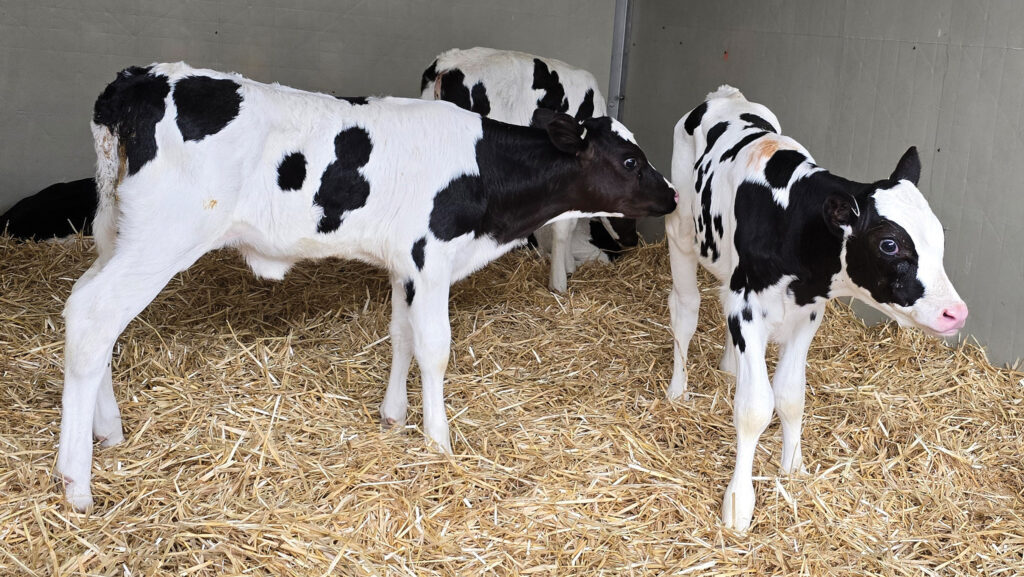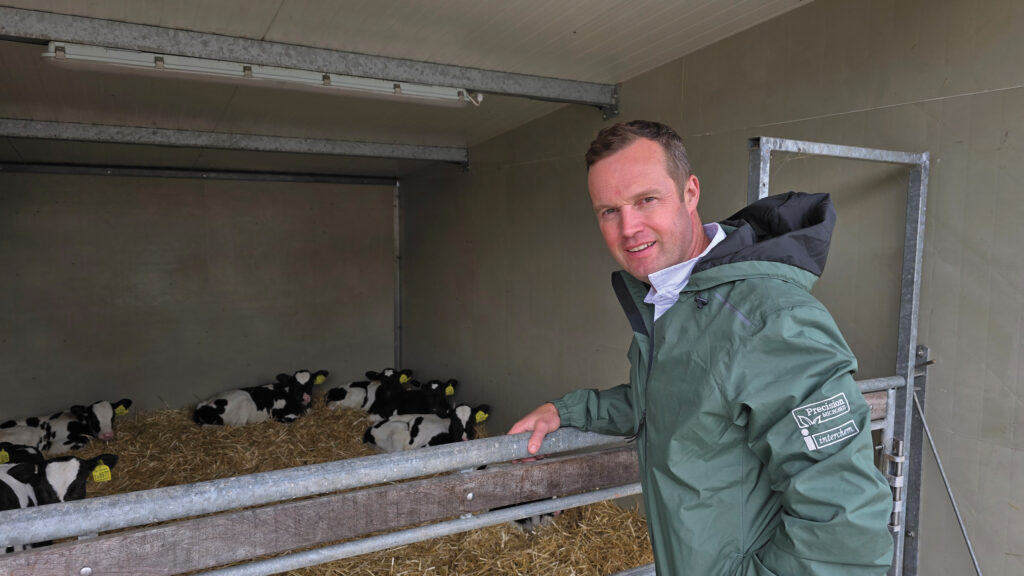Benefits of feeding transition milk to calves
 © MAG/Anne Dunn
© MAG/Anne Dunn Helping calves build immunity quickly from the moment they are born goes far beyond the “colostrum story”, according to consultant vet Tommy Heffernan.
While the role of nature’s “liquid gold” has been highlighted frequently, research increasingly shows that transition milk is also a valuable tool to achieve good calf health.
If managed effectively, it could maximise calf development and gut health, he said.
“Transition milk – the second to fifth milking after calving – contains higher levels of fatty acids, and its metabolite profile is different to [both] colostrum and whole milk,” explained Tommy.
See also: Feeding transition milk to calves cuts mortality by 68%
Although it does not have as many immunoglobulins as colostrum, transition milk contains a higher percentage of milk solids, vitamins and minerals compared with whole milk or milk replacer.
“Calves that have been fed colostrum, transition milk and then kept on whole milk have the best possible start.
“We know from studies that calves that have been fed transition milk have a more developed gut, which allows for better nutrient absorption,” he said, adding that this is critical in driving up immunity.
Johne’s status
Despite its value, transition milk is widely underutilised on farms because of logistics and worries about hygiene, Tommy said.
However, farmers should ensure they know their Johne’s status before feeding it.
“This means testing, understanding which cows are positive, and then avoiding feeding their milk,” he explained
He added that farmers should work with their vet within their own Johne’s control programme.
In higher-risk herds, often the only safe approach is to move from colostrum onto milk replacer.
Storage is also a consideration. “The challenge is how you manage your transition milk between batches, so it does not turn into a bacterial soup.
“That is where I see pasteurisation being of value,” he said.
“If you have a seasonal block-calving system, it makes this very easy, because you have lots of transition milk, and you can feed it to lots of calves as it arrives.
“Some larger farms will use a small cooling tank to store it.
“In year-round systems, it’s trickier to manage consistently, simply because supply and storage are less predictable.
“But certainly if a cow is producing transition milk – that milk which is often discarded – the ideal is to feed it to her own calf, or to groups of young calves.”
For some herds, it may also be possible to pool small amounts for young calves, if hygiene and Johne’s status are under control.
Good gut health
Pointing to wider global research on dairy calves, the importance of good gut health cannot be underestimated, said Tommy.
“Everything is showing that if we can get pre-weaned calves to perform [metabolically] in the first days and weeks, they are going to produce a lot more milk,” he explained.
“They are born with their genetic potential, but we are influencing their epigenetics with colostrum and milk.
“Nature does certain things and the further you move away from what nature does, the more challenges you are going to have,” he added.
Development of immune system
Tommy said there is an obvious link between feeding and immune health because 70% of the immune system is in the gut.
The amino acids in milk are building muscle, building skeleton and contributing to the function of the immune system, he explained.
While transition milk is moving up the priority list, he said colostrum will always be fundamental.
“If we get colostrum wrong in our young ruminants, we are on the back foot immediately.
“They are very dependent on that colostrum because it is full of antibodies, and those antibodies are memories that the cow has built up over her lifetime of different diseases, and she is passing that to the calf through colostrum,” he said.
Cows start producing colostrum three to four weeks before calving and that, he explained, is when the cow starts producing antibodies, and immune activity occurs.
“This is important when we think about colostrum quality.
“Heat stress, for example, does impact colostrum quality, as well as diet and nutrition.
“Stress is another big factor for heifers and can negatively impact it,” he added.
Because colostrum has twice the fat and protein of normal milk, it is very energy dense and that is important to remember when handling it, said Tommy.
He recommended feeding calves 3-4 litres (measuring at least 23% on a Brix refractometer).
Speed is also of the essence. “The gut is open for the first six to 12 hours, but every hour that passes, it closes down.
“So we need to get the colostrum in really quickly, in the right quality and right quantity,” he said.

Tommy Heffernan © MAG/Anne Dunn
Second feed of colostrum
He also advocated, where possible, giving a second feed of colostrum of 1-2 litres between six and 12 hours after birth.
“We always talk about colostrum from an antibody and an immunity perspective.
“But now we are learning that if we can get a second feed of colostrum, it benefits heifers in their lifetime performance, and this is down to metabolites like lactoferrin,” he explained.
“If you’re stomach-tubing with an oesophageal feeder, it is more difficult to go back and get a second feed into the calf.
“So, it’s not for every farm. But where you’ve got spare, high-quality colostrum available, it should be utilised.
“That second feed can make a real difference to passive transfer.”
An area Tommy said he sees repeated issues with is the storage of colostrum.
“Colostrum is a great medium for bacterial growth, and often the immunity story is compromised because of the handling of colostrum on farm.
“Attention to detail and hygiene are key,” he said.
For best results, he said it should be refrigerated or frozen; many farmers are now also turning to pasteurisation.
While bottle feeding colostrum to calves tends to see better antibody absorption, he said, tubing also works well, though hygiene is critical.
“When you are doing a lot of stomach tubing, particularly with colostrum, either use multiple tubes or change them regularly and make sure you have a very good wash routine,” he advised.
Tommy Heffernan’s top tips for calf rearing
- Prioritise progress over perfection
- Make small changes over time
- Be consistent and pay attention to detail – feeding time, feed temperature and the milk replacement mixture all matter
- Wean calves over a period of two to three weeks
- Feeding whole milk and bedding with plenty of straw can solve a lot of problems
- Practise good hygiene
- Use both detergent and disinfectant to clean equipment
- Test water quality regularly and keep the header tank clean to prevent biofilm build-up
- Pair calves from birth – they are social creatures
- Pain impacts the immune system – manage that with anti-inflammatories and local anaesthetic during dehorning and castration
Tommy Heffernan was speaking at a recent AHDB event on calf health from the inside out at Gelli Aur Farm, Golden Grove, Carmarthen.
